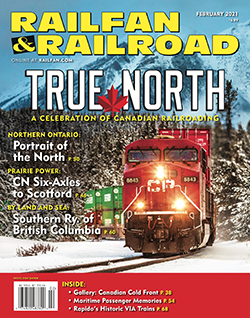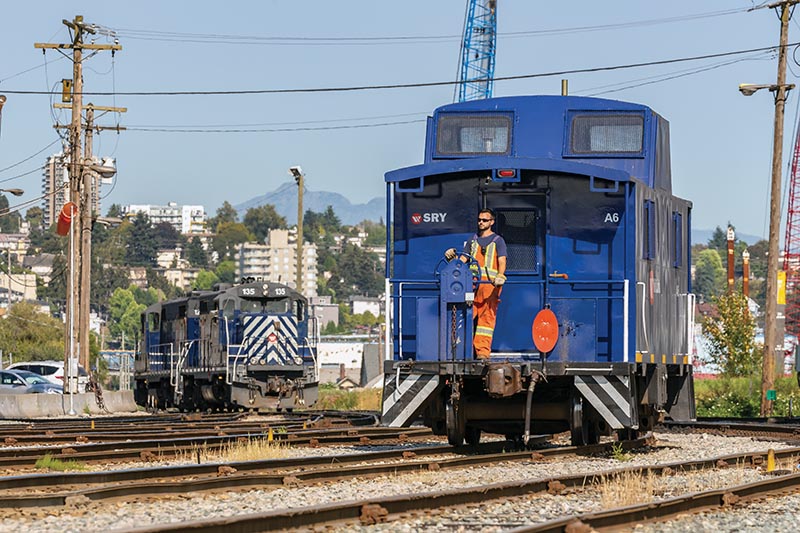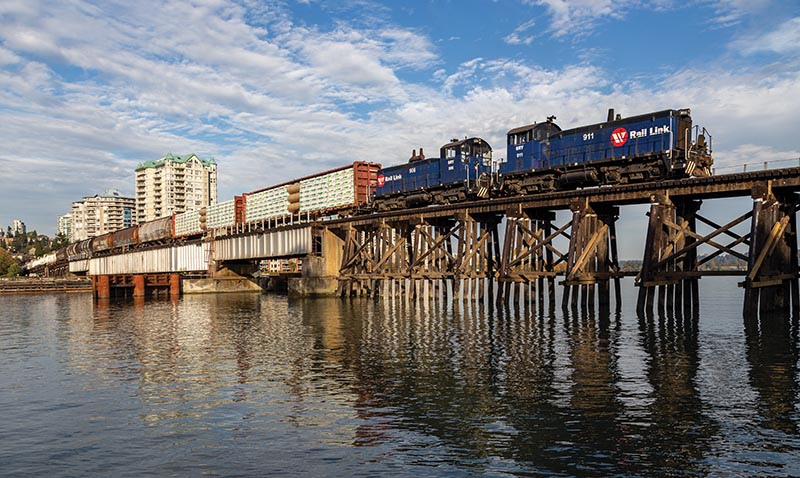 By Matthew Robson/photos by the author
By Matthew Robson/photos by the author
I remember it well. It was my first day as a trainman on Southern Railway of British Columbia in June 2006 and I was nervous. I had just landed a dream job fresh out of high school and while I had been a railfan for my entire life, I quickly learned that meant nothing in the world of railroading. I was told to bring all appropriate personal protective equipment, including a hardhat. As I sat in the crew room, a grizzly engineer walked in, looked at me and my hardhat, and said, “That’ll really help when a boxcar falls on your head!”
More than a decade later, thankfully, no boxcars have fallen on my head. At first, it was a steep learning curve, but I’ve progressed to become an experienced conductor and locomotive engineer. It has been a whirlwind of a career, but my favorite part has been working with a small group of unique individuals, many of whom I consider my closest friends.
Much like the people who operate the railway, SRY is incredibly distinctive. Based in New Westminster, B.C., the railway is owned by Washington Companies (which also owns Montana Rail Link) and operates on nearly 125 miles of track, stretching through the Lower Mainland and scenic Fraser Valley. Perhaps the railway’s most impressive attribute, though, is its adaptability, particularly given the company was established well over 100 years ago as a passenger-focused railway.

The afternoon Rack Job picks up a set of autoracks from the Wallenius Wilhelmsen Solutions compound on August 27, 2014. The auto industry is the livelihood of the railway, making up a majority of its business.
Interurban Origins
In 1897, several interurban and street railway systems operating in Vancouver, Victoria, and New Westminster were combined into British Columbia Electric Railway. The railroad grew, eventually reaching Chilliwack in 1910. The railroad also leased the Canadian Pacific-built Vancouver & Lulu Island Railway, a north-south route through Vancouver, connecting the island city of Richmond. While its primary focus was moving people, the growing Lower Mainland and Fraser Valley produced plenty of freight traffic too.
The railway flourished until the 1940s, when automobiles and highways proved more attractive to passengers. The final blow came in 1958 when the last remaining interurban route between Marpole and Steveston closed; however, the freight business remained. Three years after the last interurban ran, the freight operation was absorbed by the crown corporation British Columbia Hydro and Power Authority (BC Hydro). The railroad’s locomotives operated with a distinct yellow and red paint scheme with the company’s logo.

Conductor Julian Myles guides caboose A6 into a clear track in Trapp Yard, preparing to build the Valley train on top of it on September 4, 2020. The cabs were all locally built for the railway and are still a common sight.
The 1980s were the most turbulent time in the railway’s history. First, CP resumed operations on the 22-mile Vancouver & Lulu Island Railway after nearly an 80-year lease with the railway. Then, in 1988, BC Hydro sold the railway. Itel Rail Group, a U.S.-owned division of Itel Corp, purchased it and renamed it Southern Railway of British Columbia. The company kept the red, white, and blue livery BC Hydro had introduced shortly before the sale (which had replaced the yellow and red scheme). But the new owners were not well received and the employees went on a strike within a year after the company tried to change its pension program. Six years later, Itel sold the railroad to Washington Companies, which soon painted all the equipment (mostly SW900s, MP15s, and SD38s) into blue and black like its other railroad, Montana Rail Link. Nearly all of SRY’s present motive power is original to the railroad, except for some GP9s from MRL and Canadian Pacific…


